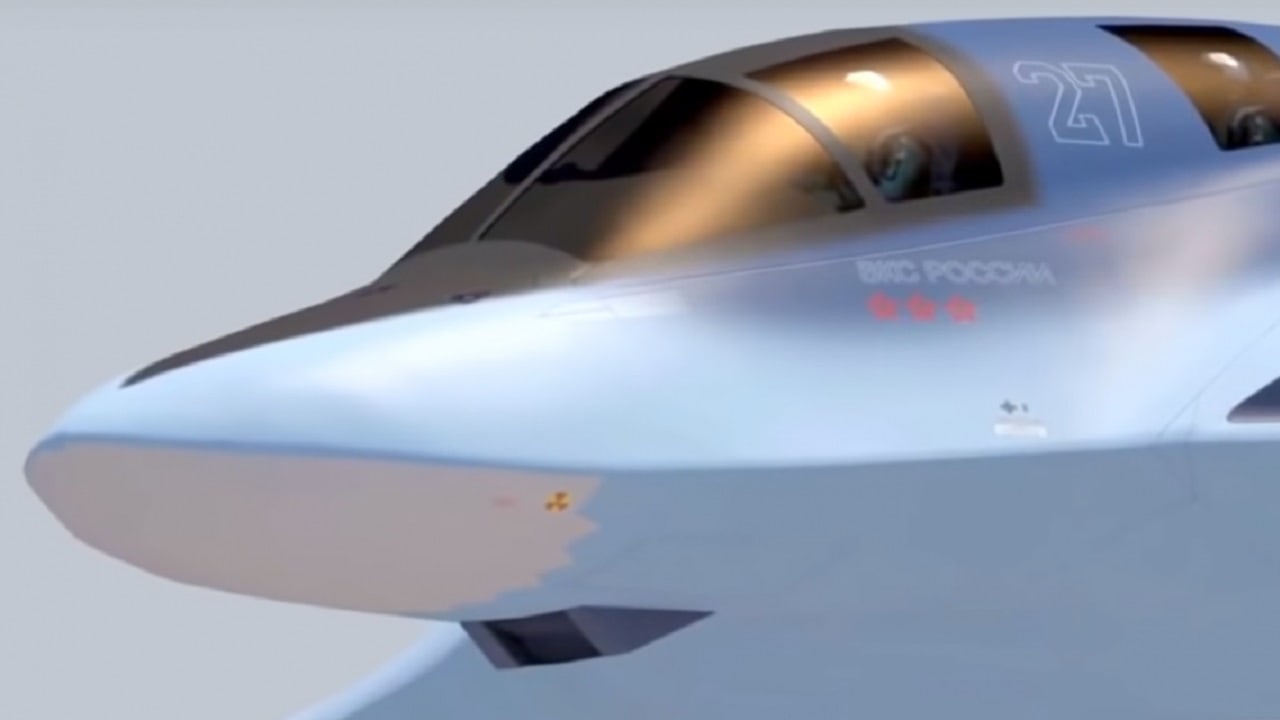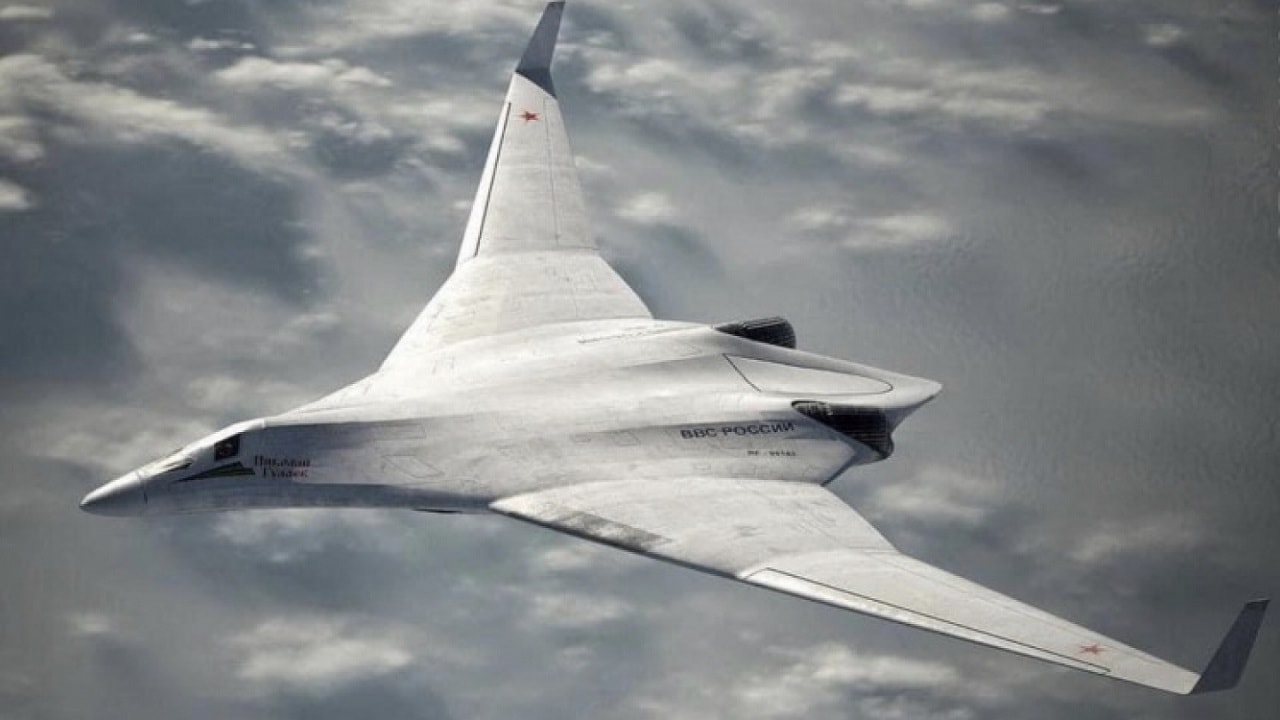Key Points and Summary: Russia’s PAK DA stealth bomber is being developed as a nuclear-capable, long-range platform designed to challenge the U.S. B-21 Raider.
-With a reported takeoff weight twice that of the B-21 Raider, the PAK DA could carry a heavier payload and remain in the air longer.

PAK DA Stealth Bomber. Image Credit: Russian State Media/Creative Commons.
The Big Problem: However, delays until at least 2030 raise doubts about its production and deployment.
-Stealth remains a critical factor—while the U.S. has perfected radar-evading technology, Russia’s capabilities remain uncertain. As the B-21 nears operational readiness, the real question is whether the PAK DA will ever fly in significant numbers to pose a genuine threat.
Russia’s PAK DA Stealth Bomber: Nuclear Threat or Paper Tiger?
Russian media has claimed that the emerging PAK DA stealth bomber is likely to be nuclear-armed and capable of a much larger take-off weight than the US B-21 bomber.
With broadband stealth capacity and a heavy bombing load, Russia’s PAK DA could potentially pose risks to NATO and the West by introducing the possibility of a surprise, secret bombing attack.
Despite this potential threat, there is some question as to whether Russia’s advanced PAK DA bomber will ever exit, given the multiple reports that the platform will be delayed until 2030.
Tu-160M in Ukraine
But does Russia even need a new stealth bomber?
Case in point: it seems pretty relevant to point out that Russia’s upgraded Tu-160M conventional bomber is performing exceptionally well in Ukraine, raising the prospect that Russia’s operational need for heavy bombing missions may be met in the short term.
However, in any significant engagement with the West, Russia must pose a threat with a stealthy high-altitude bomber because a non-stealthy Tu-160M would be highly vulnerable to enemy fire.
Numerous earlier reports suggested that the PAK DA was slated to enter production in 2027, yet current reports indicate that the bomber may be delayed.
Also, even if the arrival of the first several bombers is delayed, Russia may lack the industrial capacity to produce the bomber in impactful numbers.
Nuclear Armed PAK DA Stealth Bomber
The fact that Russia will arm its stealth bomber with a nuclear-capable cruise missile is significant, as it could be seen as a deliberate effort to match or rival US Air Force plans to arm the B-21 with the nuclear-capable Long-Range-Standoff (LRSO) weapon.

PAK DA Bomber. Image Credit: Artist Rendition/Creative Commons.
As far back as 2021, Russia’s TASS news agency said that its PAK DA would be nuclear-capable and hypersonic.
“The PAK DA is expected to deploy Kh-102 nuclear-tipped stealthy cruise missiles, and a number of newer hypersonic designs including derivatives of the Kh-47M2.” a TASS report from 2021 says.
B-21 vs. PAK DA
According to available specs, there is a significant difference between the B-21 and Russian stealth bomber in terms of take-off weight. The PAK DA’s reported take-off weight of 30 tons is twice the 15-ton take-off weight of the B-21.
This means that a Russian PAK DA could potentially be positioned to drop a much higher amount of ordnance on a bombing mission and operate with much more dwell time above target areas.
This capacity is only relevant to the extent that the PAK DA can avoid detection and remain capable of adjusting to new targets as they emerge.

PAK DA stealth bomber. Image Credit: Creative Commons.
The PAK DA’s larger payload was suggested as far back as 2013 in Russia’s RIA newspaper, which also reported that the Russian stealth bomber would fire conventional, nuclear, and hypersonic weapons.
Bomber Showdown
However, the largest and most significant question regarding the PAK DA likely pertains to the extent and effectiveness of its stealth properties.
The US B-21 Raider is mainly secret, yet senior Air Force leaders have been clear that the new Raider contains new generations of stealth properties.
The PAK DA incorporates a large, stealthy-looking blended wing-body fuselage and inlets built into the wings to avoid sharp protruding angles easily seen by ground-defense radar.
There are also likely to be specific questions about the PAK DA’s radar-absorbing materials and thermal management technologies. The closer a stealth aircraft can operate at a temperature aligned with the surrounding atmosphere, the less likely it is to be recognized by thermal sensors looking for a heat signature.
The intent of the B-21, and the broadband stealth technology it presents, is to operate above highly defended enemy territory undetected and drop precision bombs from stand-off altitudes. It aims to do all of this before an enemy even knows anything is there.

PAK DA. Image Credit: Artist Concept.
Could this new bomber incorporate similar kinds of advanced stealth? The answer likely pertains to things not visible to the human eye but somewhat related to computing, sensing, coating, and weapons efficiency.
About the Author: Kris Osborn
Kris Osborn is the Military Technology Editor of 19FortyFive and President of Warrior Maven – Center for Military Modernization. Osborn previously served at the Pentagon as a highly qualified expert in the Office of the Assistant Secretary of the Army—Acquisition, Logistics & Technology. Osborn has also worked as an anchor and on-air military specialist at national TV networks. He has appeared as a guest military expert on Fox News, MSNBC, The Military Channel, and The History Channel. He also has a Masters Degree in Comparative Literature from Columbia University.

